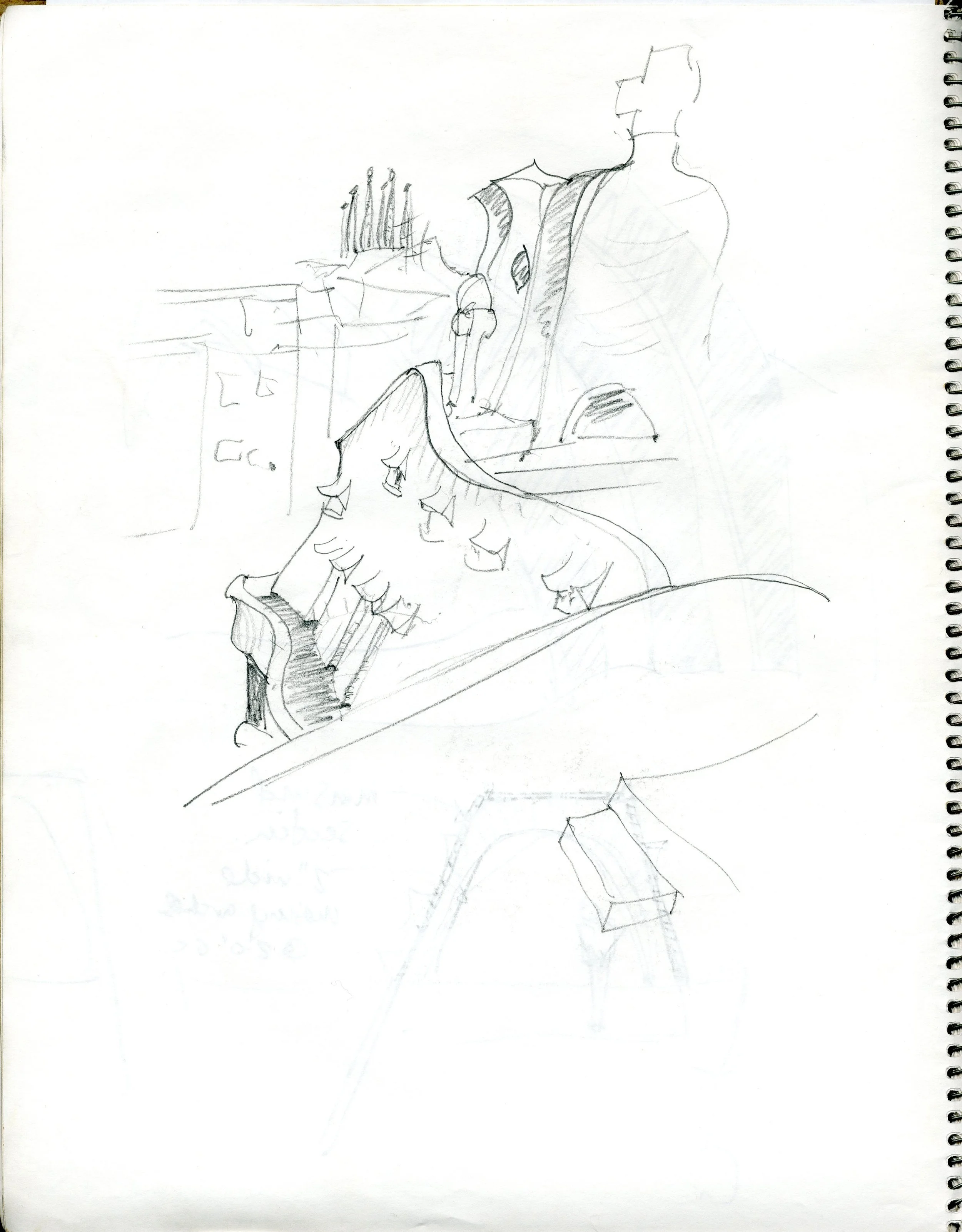Inspiration
An Architects pilgrimage
A collection of hand sketches and journaled anecdotes.
Turkey
A circumnavigation of the great amphitheatre sites of Antalya wherein Michael investigates and documents the extraordinary spaces—the literary and musical heart of the ancient Greek colonies of Asia Minor, in what is now westernmost Turkey.
These cities, designed and built to astonishing standards of fit and finish, were the work-product of two irresistible forces: a burgeoning Greek population on the Balkan mainland colonizing immediately to the east in the congenial and fertile Anatolian hill country and the serious wealth generated by trade both regional and as far away as present India and Iran.
These capital projects are at once visionary and, in their silences, reminders that no empire lasts forever but that a visionary people’s architecture captures the high watermarks of their time in the sun.
Greece
Words fail: mankind has produced buildings hailing victorious generals and the fleeting moments of political triumph but the ancient Greeks stand almost alone in their spirit of building for an idea of a common culture, a common citizenship they called 'rule of the people': democracy.
As Michael’s drawings suggest, no design is ever entirely a political idea, whatever its passionate inspiration but the Greeks, in their own singular passion to unite body, mind and spirit in their culture, bequeathed first to Rome, then Renaissance Europe and then the New World both classicism in design and a kind of aspiration in lived experience—the soul of collective art and design—that inspires us to this day.
Photograph by Oliver Martin-Gambier
France
The irascible Le Corbusier's work opened eyes and sparked controversies from the start. Quintessentially French in outlook, revolutionary in his sense of space and profoundly inspired by daVinci's mathematical proportions (the Greek golden ratio and the Fibonacci series <link to WOOD/studio>), Le Corbusier annoyed Dalí, infuriated Jane Jacobs and flirted with Mussolini.
Yet the Swiss-born genius created work numbering at present seven UNESCO World Heritage sites and, tellingly, in this day of climate disruption and ‘open-plan’ offices amongst the very first 'healthy buildings,' designed on a human scale and with human needs/wants fully in mind: superb light, subtle ventilation, and a 'dialogue' of sightlines between rooms to move the eye and open the lived experience.
His other sketches of France’s best modern architecture aside, Michael’s sketchwork of Le Corbusier’s buildings both secular/administrative and church/religious (what Le Corbusier termed in a letter to Albert Camus a ‘box of miracles’) honours the grand old architect's influence, meantime delineating his own personal ambitions for the new.
Italy
The shock of the ancient: halfway through his teens, Michael took a high school “history and art” trip to Rome and Sorrento, marinating in the Italian culture of 1973 while trying to process the architectural slam-dance of what he’d experienced at Pompeii and Hadrian’s villa. An architectural sojourn in Venice in the autumn of 1982 foreshadowed a return a decade later for yet another design sabbatical, this time highlit by an international motocross, at Rovereto, in the mountains of the Alto Adige south of the Brenner Pass. Michael he hitchhiked to the competition, ultimately scoring race results dominated for the first time by US bikers. Having measured the dimensions of Sicilian theatres, Michael’s not yet sketched—or measured—their Italian counterparts. That’s for the next trip.
Spain
It’s complicated.
Booted out of a dream of a posh flat—having paid four weeks in advance for the privilege of a view of the Eiffel Tower—his landlord’s girlfriend had booted him out, precipitating Michael’s loss of a fixed Parisian address—Michael took both his cash and foiled plan and did what any self-respecting gypsy architect would do: he jumped on the next train to Spain.
It was the start of a love affair with Madrid, Granada, Barcelona and points en route. Michael devoured the works of Gaudí, Dalí and Picasso, the life in the street of the great cities of Spain, committing to paper the visions of the two Catalan giants and the Andalusian Picasso, from furniture to the nude to stonework.
There's nothing superficial in the quest for great design: one needs to go deep and explore and source insights and best practices both new and old and, most of all, to know how to fill the well after a big project. It's a process of re-creation, literally. Michael's inspirations are disparate yet profoundly linked: each and every one is all about movement, the music of an experience—the rhythms of something beautiful and startling and new—all the while hewing close to the natural world and all its mysteries and memories, the breath of all that lives. And travel–perhaps travel most of all: where an exterior experience—Gaudí's Sagrada Familía, the soundstage of the Bastille Opera House, a detail of an ancient column whited by centuries beneath the Turkish sky—meets the innermost. I am a camera, someone clever once wrote: so too an architect's eye. What follows is a spare cross-section of Michael's linework and sketches, gleaned from decades'-worth of sketchbooks documenting travels and views and moments inspiring his devotion to architecture.




















































